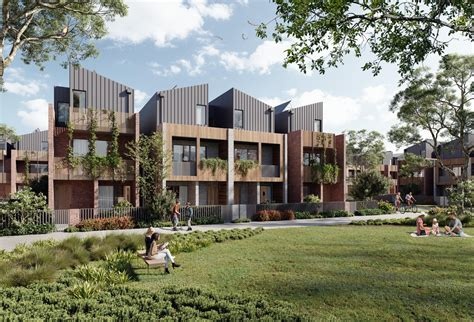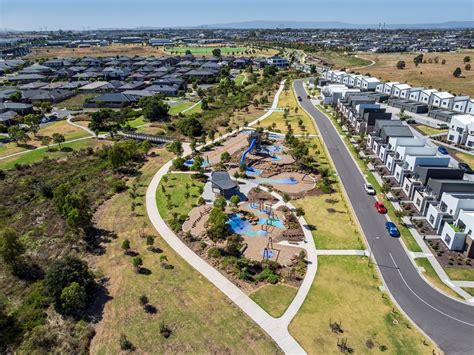Chart Color Schemes
est. as @ -- *
ABS ERP | -- people | --
2021 Census | -- people
Sales Activity
Curious about local property values? Filter the chart to assess the volume and appreciation (including resales) trends and regional comparisons, or scroll to the map below view this information at an individual property level.
Find a Recent Sale
Sales Detail
Population
Epping - West lies within the top 10% of areas nationally in terms of population growth performance according to AreaSearch analysis of short and medium-term trends
AreaSearch's analysis indicates that Epping West's population is approximately 13,221 as of August 2025. This figure represents an increase of 1,078 people since the 2021 Census, which recorded a population of 12,143. The growth is inferred from ABS estimates showing an estimated resident population of 12,905 in June 2024 and the addition of 325 validated new addresses post-Census. This results in a population density ratio of 1,796 persons per square kilometer, higher than the average across national locations assessed by AreaSearch. Epping West's growth rate of 8.9% since the 2021 Census exceeds the national average (8.6%), positioning it as a growth leader in its region. Overseas migration contributed approximately 58.1% to overall population gains recently.
AreaSearch uses ABS/Geoscience Australia projections for each SA2 area, released in 2024 with a base year of 2022. For areas not covered by this data, AreaSearch employs VIC State Government's Regional/LGA projections from 2023, adjusted using weighted aggregation methods to SA2 levels. Growth rates by age group are applied across all areas for years 2032 to 2041. Based on these projections, Epping West is expected to experience exceptional growth, placing it in the top 10 percent of national statistical areas. By 2041, its population is projected to increase by 7,841 persons, reflecting a total increase of 56.9% over the 17-year period.
Frequently Asked Questions - Population
Development
Residential development activity is lower than average in Epping - West according to AreaSearch's national comparison of local real estate markets
Epping - West averages around 80 new dwelling approvals per year. The Australian Bureau of Statistics produces development approval data on a financial year basis, showing 403 homes approved over the past five years from FY20 to FY25, with none yet in FY26. Each dwelling built has resulted in an average of 2.2 new residents per year over these five years, indicating strong demand that supports property values. New homes are being constructed at an average cost of $333,000, below regional levels, offering more affordable housing options for buyers.
This financial year has seen $116.9 million in commercial approvals, reflecting high local commercial activity. Compared to Greater Melbourne, Epping - West records significantly lower building activity, 86.0% below the regional average per person, which typically reinforces demand and pricing for existing properties. This is also below national averages, suggesting planning constraints or area maturity. New developments consist of 56.0% detached houses and 44.0% townhouses or apartments, marking a shift from the current 84.0% houses and reflecting decreasing developable sites and changing lifestyles seeking diverse, affordable housing options. The area has approximately 3389 people per dwelling approval, indicating an established market. By 2041, Epping - West is projected to grow by 7525 residents.
If current construction levels persist, housing supply may lag population growth, potentially intensifying buyer competition and supporting price growth.
Frequently Asked Questions - Development
Infrastructure
Epping - West has strong levels of nearby infrastructure activity, ranking in the top 30% nationally
Infrastructure changes significantly influence an area's performance. AreaSearch has identified 12 projects that may impact the area. Notable ones include O'Herns Logistics Park, Epping Road Upgrade, New Epping, and Cooper Street Employment Precinct. The following list details those most likely to be relevant.
Professional plan users can use the search below to filter and access additional projects.
INFRASTRUCTURE SEARCH
Frequently Asked Questions - Infrastructure
Cooper Street Employment Precinct
Major employment precinct development along Cooper Street in Epping, creating over 25,000 jobs in advanced manufacturing, logistics, and technology sectors. It is a state-significant industrial area with excellent access to transport routes, including the Hume Freeway and proximity to Melbourne Wholesale Markets. The precinct includes various sub-precincts at different stages of development and incorporates business, office, warehouse, and industrial uses.
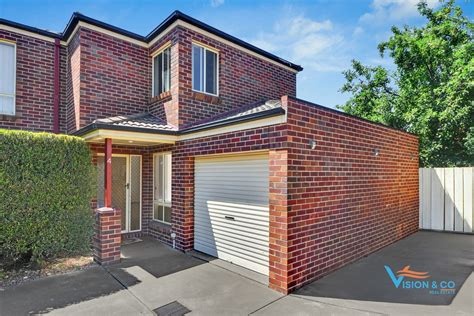
New Epping Health Hub
The New Epping Health Hub is a state-of-the-art health, healing, and innovation precinct located in Melbournes north, part of the largest public-private health cluster. It features the Northern Private Hospital, allied health services, medical offices, and integration with research, education, and natural surroundings to provide comprehensive primary, community, and specialized health services including GP clinics, mental health, and preventive initiatives.
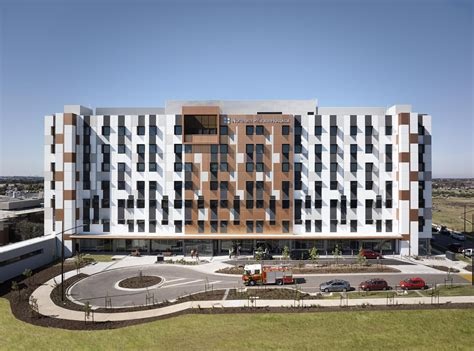
Northern Hospital Redevelopment Project
The $813 million Northern Hospital Redevelopment Project is a two-stage initiative to expand and upgrade facilities at Northern Hospital in Epping, Victoria, to meet growing healthcare demands in Melbourne's northern suburbs. Stage 1 involves constructing a four-storey Ambulatory Care Centre for outpatient services, clinical care, and administration, with construction commencing in May 2025 and expected completion in mid-2026. Stage 2 will deliver a new emergency department fronting Cooper Street, including nearly 200 treatment spaces, a dedicated paediatric area, mental health and alcohol and other drugs hub, 30-bed mental health facility, acute behaviour treatment space, inpatient unit tower with 144 additional beds, emergency observation unit, and infrastructure upgrades. The project will enable treatment of an additional 30,000 patients annually and create up to 2,200 jobs during construction.
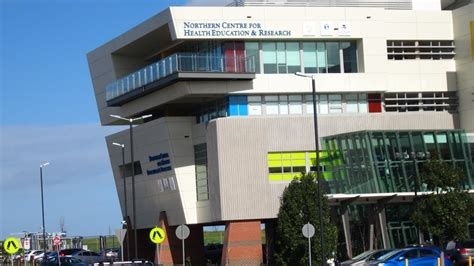
Northern Hospital Redevelopment
A comprehensive $813 million redevelopment of Northern Hospital delivered in two stages. Stage 1 (under construction) includes a four-storey Ambulatory Care Centre for outpatient and ambulatory services. Stage 2 will deliver a new Emergency Department and Inpatient Unit Tower with almost 200 treatment spaces, supporting 30,000 additional emergency patients annually. The project includes dedicated paediatric zones, mental health and alcohol/drug hubs, and expanded inpatient facilities to serve Melbourne's rapidly growing northern suburbs.

Wollert Rail Extension
Proposed heavy rail extension branching from the Mernda line near Lalor to serve Epping North and Wollert. Current activity is a government-backed feasibility and corridor planning study, with corridor protection actions progressing at council level. No construction has commenced.
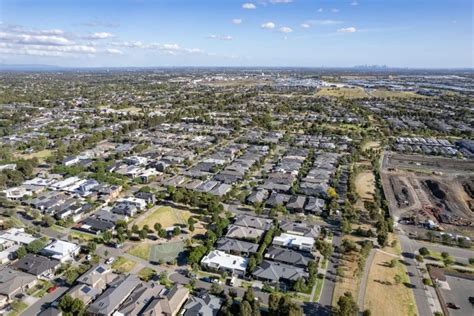
Epping Activity Centre Plan
The Epping Activity Centre Plan guides development in the Epping activity centre and surrounding areas to deliver at least 9,800 new homes by 2051. It focuses on increasing housing supply, diversity, and affordability near transport, jobs, and services, with graduated building heights, infrastructure improvements, and sustainable community growth.

Linfield Place Shopping Centre
Premium $45 million architecturally designed shopping centre by Oreana on Epping Road, Wollert. The centre will deliver 3,500sqm of lettable space with tenants including 7-Eleven, Oporto, Snap Fitness, Aspire Early Learning & Kindergarten, Bottle Mart, and specialty retail, designed to serve the rapidly growing local population. Construction commenced in early 2025, expected completion early 2026.
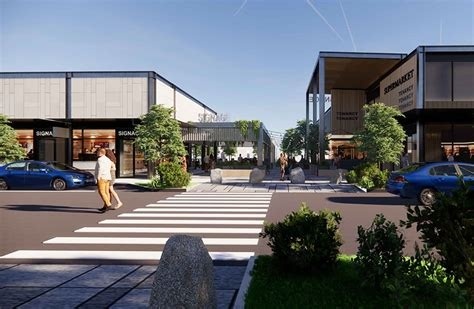
Melbourne Food Innovation and Export Hub (MFIX)
A proposed 50-hectare international food innovation and export hub adjoining the Melbourne Wholesale Fruit, Vegetable and Flower Market in Epping. Designed to position Melbourne's North as a major player in the global food market, the hub will provide modern food processing, research and development, export logistics, business incubation, manufacturing, and training facilities. It aims to drive innovation in food technology, create thousands of high-value jobs, boost Victoria's food and fibre exports, and support local manufacturers and producers.

Employment
The employment landscape in Epping - West shows performance that lags behind national averages across key labour market indicators
Epping - West, Victoria, has a well-educated workforce with prominent representation in essential services sectors. Its unemployment rate is 4.2%, with an estimated employment growth of 1.8% over the past year.
As of June 2025, there are 6940 residents employed, with an unemployment rate of 4.2%, which is 0.4% lower than Greater Melbourne's rate of 4.6%. Workforce participation stands at 67.9%, slightly higher than Greater Melbourne's 64.1%. The dominant employment sectors are health care & social assistance, retail trade, and construction. Health care & social assistance has a particularly high representation, with an employment share 1.2 times the regional level.
Conversely, professional & technical services show lower representation at 5.5% compared to the regional average of 10.1%. Over the year to June 2025, employment increased by 1.8%, while labour force grew by 1.4%, reducing the unemployment rate by 0.4 percentage points. In contrast, Greater Melbourne experienced higher employment growth of 3.5% and a slight rise in unemployment rate. State-level data from Sep-25 shows Victoria's employment grew by 1.08% year-on-year, with an unemployment rate of 4.7%. Nationally, employment grew by 0.26%, with an unemployment rate of 4.5%. Jobs and Skills Australia forecasts national employment growth of 6.6% over five years and 13.7% over ten years. Applying these projections to Epping - West's employment mix suggests local growth of approximately 6.4% over five years and 13.5% over ten years.
Frequently Asked Questions - Employment
Income
The economic profile demonstrates above-average performance, with income metrics exceeding national benchmarks based on AreaSearch comparative assessment
Epping - West has a median taxpayer income of $54,485 and an average of $62,415 according to the latest postcode level ATO data aggregated by AreaSearch for financial year 2022. This is slightly lower than average on a national basis, contrasting with Greater Melbourne's median income of $54,892 and average income of $73,761. Based on Wage Price Index growth of 10.11% since financial year 2022, current estimates for March 2025 would be approximately $59,993 (median) and $68,725 (average). According to the 2021 Census, household, family and personal incomes in Epping - West cluster around the 50th percentile nationally. The largest income segment comprises 41.3% earning $1,500 - 2,999 weekly, with 5,460 residents falling into this category. This aligns with the regional trend where this cohort represents 32.8%. High housing costs consume 18.2% of income, but strong earnings still place disposable income at the 54th percentile. The area's SEIFA income ranking places it in the 5th decile.
Frequently Asked Questions - Income
Housing
Epping - West is characterized by a predominantly suburban housing profile, with a higher proportion of rental properties than the broader region
Epping - West's dwelling structure, as per the latest Census, consisted of 84.1% houses and 15.9% other dwellings (semi-detached, apartments, 'other' dwellings), compared to Melbourne metro's 87.2% houses and 12.8% other dwellings. Home ownership in Epping - West was at 17.0%, with mortgaged dwellings at 51.5% and rented ones at 31.5%. The median monthly mortgage repayment was $1,820, lower than Melbourne metro's $1,900 but close to the national average of $1,863. The median weekly rent in Epping - West was $381, higher than Melbourne metro's $371 and the national figure of $375.
Frequently Asked Questions - Housing
Household Composition
Epping - West features high concentrations of family households, with a higher-than-average median household size
Family households constitute 82.1% of all households, including 50.8% couples with children, 16.7% couples without children, and 13.3% single parent families. Non-family households comprise the remaining 17.9%, with lone person households at 15.2% and group households making up 2.7% of the total. The median household size is 3.2 people, larger than the Greater Melbourne average of 2.9.
Frequently Asked Questions - Households
Local Schools & Education
Epping - West shows strong educational performance, ranking in the upper quartile nationally when assessed across multiple qualification and achievement indicators
Educational qualifications in Epping-West show that 31.3% of residents aged 15+ hold university degrees, compared to 37.0% in Greater Melbourne. Bachelor degrees are the most common at 20.6%, followed by postgraduate qualifications at 8.3% and graduate diplomas at 2.4%. Vocational credentials are also prevalent, with 29.9% of residents aged 15+ holding such qualifications - advanced diplomas at 13.3% and certificates at 16.6%. Educational participation is high, with 35.6% of residents currently enrolled in formal education.
This includes 14.4% in primary education, 8.3% in secondary education, and 5.1% pursuing tertiary education. The four schools in Epping-West have a combined enrollment of 2,337 students. The area has typical Australian school conditions (ICSEA: 1046) with balanced educational opportunities. There are three primary and one secondary school serving distinct age groups. School capacity exceeds residential needs, with 17.7 places per 100 residents compared to the regional average of 13.1, indicating that Epping-West serves as an educational center for the broader region.
Frequently Asked Questions - Education
Schools Detail
Nearby Services & Amenities
Transport
Transport servicing is good compared to other areas nationally based on assessment of service frequency, route connectivity and accessibility
The analysis of public transport in the Epping-West area shows that there are currently 36 active transport stops operating, all of which involve buses. These stops are served by four different routes combined, resulting in a total of 3,265 weekly passenger trips. The accessibility to these transport services is considered good, with residents generally living within 250 meters from the nearest stop.
On average, there are 466 trips per day across all routes, which translates to approximately 90 weekly trips per individual stop.
Frequently Asked Questions - Transport
Transport Stops Detail
Health
Epping - West's residents boast exceedingly positive health performance metrics with both young and old age cohorts seeing low prevalence of common health conditions
Epping - West shows excellent health outcomes with low prevalence of common conditions across both young and elderly residents.
Private health cover stands at approximately 51%, slightly below the average SA2 area (~6,755 people). Asthma and mental health issues are the most prevalent conditions, affecting 5.8% and 5.0% respectively. 80.9% of residents report no medical ailments, higher than Greater Melbourne's 74.0%. Only 8.0% of residents are aged 65 and over (1,059 people), lower than Greater Melbourne's 13.2%. Despite this, health outcomes among seniors require more attention than the broader population.
Frequently Asked Questions - Health
Cultural Diversity
Epping - West is among the most culturally diverse areas in the country based on AreaSearch assessment of a range of language and cultural background related metrics
Epping-West has a population where 47.0% were born overseas, with 62.2% speaking languages other than English at home. Christianity is the predominant religion, practiced by 44.8%. Islam's representation is notably higher at 17.7%, compared to Greater Melbourne's average of 9.1%.
Ancestry-wise, 'Other' is highest at 28.9%, exceeding the regional average of 17.4%. Australian ancestry is lower at 10.7% versus 17.3%. Indian ancestry stands at 10.7%. Notable ethnic group differences include Macedonian (6.4% vs regional 4.6%), Sri Lankan (1.3% vs 0.8%), and Italian (9.3% vs 9.6%).
Frequently Asked Questions - Diversity
Age
Epping - West hosts a very young demographic, ranking in the bottom 10% of areas nationwide
Epping-West has a median age of 33, which is younger than Greater Melbourne's figure of 37 and Australia's national average of 38 years. Compared to Greater Melbourne, Epping-West has a higher proportion of residents aged 5-14 (16.0%) but fewer residents aged 75-84 (2.1%). Between the 2021 Census and now, residents have aged by an average of 1 year, with the median age rising from 32 to 33 years. Specifically, the 55-64 age group has grown from 7.7% to 9.0%, while the 15-24 cohort increased from 11.8% to 13.0%. Conversely, the 5-14 cohort declined from 18.1% to 16.0%, and the 0-4 age group dropped from 8.3% to 7.1%. By 2041, demographic modeling projects significant changes in Epping-West's age profile, with the 45-54 age cohort set to rise substantially, expanding by 1,537 people (91%) from 1,697 to 3,235.


